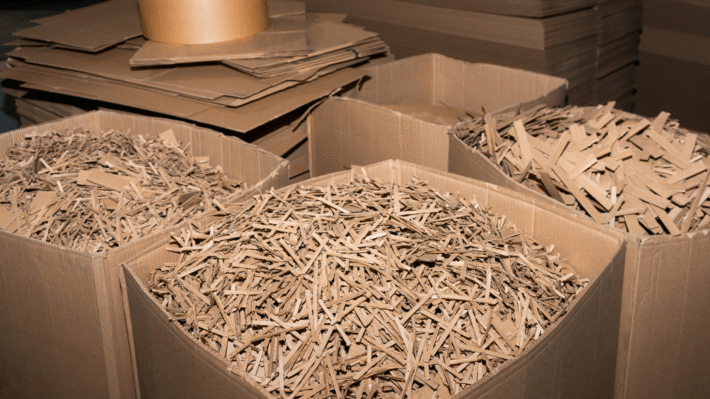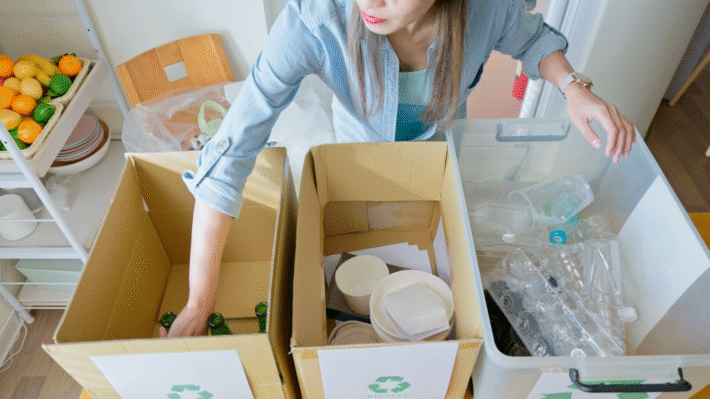Metal Plating and Coating to Minimize Hazardous Byproducts

Welcome, gentle reader! You’ve just stumbled upon a treasure trove of knowledge! In this enlightening read, we’ll delve deep into the world of metal plating and coating waste supply chain, exploring the tantalizing possibility of creating circularity to combat the hazardous byproducts of galvanization. Have you ever thought about how our linear problem might just be our circular opportunity? Or have you pondered the idea of transforming waste into a resource? If yes, you’re about to be dazzled by the innovative reduction strategies just within your reach. So, buckle up! From reduction principles to futuristic trends, from case studies to regulatory challenges, we will journey into the realm of reimagined metal waste management; with the optimism of Gary Halbert and the simplicity of a 5th-grade textbook. Curious? Let’s get started!
Understanding Metal Plating and Coating Waste
Metal plating and coating processes are as important as they are complicated. They give items a fighting chance against wear and tear, corrosion, heat damage, etc. But, there’s a part of this process that we don’t usually consider – the waste produced. Let’s delve into the exciting world of this seemingly invisible byproduct!
What is Galvanization?
The Role of Galvanization
Galvanization is a super-hero in the world of metal treating. Picture it like a metal’s suit of armor. It’s a protective coating of zinc to prevent rusting. The most common method we use is hot-dip galvanization. That’s where we dip pieces of steel or iron into a scorching bath of molten zinc. The result? Our humble, everyday items like car parts, roof sheeting, and street lamp posts are suddenly invincible against corrosion!
Why Galvanization Causes Waste
There’s a twist to the tale, though. This incredible process isn’t all glitz and glory. It makes quite a mess as it goes along. Imagine baking a cake with flour dusting every corner of the kitchen! Zinc ash and zinc dross are the tired remnants of the molten bath once it’s done its duty. And then there’s the ‘spent pickle liquor’ from the initial cleaning of the metal. Now that’s some potent stuff! It’s super acidic and full of heavy metals. Not a pretty sight.
Types of Waste Generated
Common Byproducts: Sludge, Wastewater, Cyanide
Say hello to our three ‘unsavory’ byproducts – sludge, wastewater, and cyanide. Here’s a little more dirt on them.
The sludge is a gooey combination of all the impurities knocked off during the cleaning step. This icky stuff is tough to treat, so it’s usually sent to hazardous waste landfills. The wastewater, on the other hand, is all the water used in the process, now contaminated with metals and acids. But the cyanide? Now, that’s the real bad guy. It’s used in certain plating processes and has a notorious reputation for being poisonous.
Impact on Environment and Health
These galvanization byproducts can be hazardous to both environment and health. Heavy metals like lead and chromium can seep into the soil and groundwater. They can harm the plants we grow and the animals we rear. If workers are not adequately protected, repeated exposure can lead to severe health problems such as skin burns, eye damage, and even lung cancer.
Simply said, we need a game plan to tackle this waste problem. We can love the dazzling allure of galvanization and still care for our environment. Let’s embrace the challenge of reducing and reusing the waste we generate from metal plating and coating.
Circularity Principles in Metal Plating
When it comes to metal plating and coating, wouldn’t it be grand to turn its damaging waste into a benefit? Sustainability, that’s the ticket, and it’s right at your doorstep! Let’s dive into the world of circularity principles, the seed to a healthier industry.
Seeing Waste as a Resource
Ah, what’s this, you ask? Viewing waste as a resource isn’t only about recycling old metal scraps. It’s a whole new perspective, a change in how we deal with what we usually reject.
Reusing and Recycling Waste
Friends, let me whip up an example for you. Picture a metal workshop. Heavy machinery, sparks flying, and workers in protective gear. At the end of the day, mountains of metal shavings are swept aside, a tiresome afterthought.
Here’s the curveball. These shavings aren’t just waste. They can be recycled, ending up in new metal products and saving resources along the way!
Minimization Hierarchy and Prevention
Next on the plate is something called the minimization hierarchy. This concept puts the focus on reducing waste creation right from the start. Think of it as a step-by-step escalation process. First, we attempt to reduce waste. Can’t do that? Then we reuse. If reusing isn’t feasible, then we recycle. The last resort is safe disposal, but with the right approach, we can keep this to an absolute minimum.
Implementing Eco-Friendly Substitutes
The old ways of metal plating came with their fair share of drawbacks. Acid baths, toxic chemicals, and pollution. To cleanse this industry, we need alternatives. And guess what, they’re already here!
Industrial Symbiosis Explained
At its heart, industrial symbiosis is about leveraging the old saying, “One man’s trash is another man’s treasure.” This idea urges various industries to work in harmony, turning waste from one process into raw material for another.
For instance, excess metal shavings from a machining workshop could be used as a raw material in another industry. A dial-down on the stingy, and a dial-up on the chummy, that’s what it’s about!
Examples of Eco-friendly Alternatives
Last but by no means least, we can swap harmful plating materials for eco-friendly substitutes. For instance, traditional, nasty hexavalent chromium can be replaced by trivalent chromium. Powder coating, a completely dry finishing process, provides another very innovative cherry on the cake.
Even small changes can make a big difference, and every step towards circularity is a win for us, for the industry, and for the planet. And isn’t that a beautiful thought to end on?
Bright ideas are brewing in industrial circles. Spend some time exploring, and you’ll be amazed at the change a fresh perspective can bring. Isn’t it high time for us to realize that in the world of metal plating, waste doesn’t have to be wasted?
Strategies to Reduce Hazardous Byproducts
When we talk about coating and metal plating – which spans various industries like automotive, construction, and electronics – an important issue to address is waste. Specifically, the hazardous byproducts that can have detrimental effects on the environment and public health. But fret not, as we’re here to dive into the juice on how to significantly cut back on these harmful waste materials.
Pre-treatment Innovations
Before we dig into the details, let’s understand pre-treatment. It’s a process that prepares the base metal for coating. And one common method is using pickling acids.
Using Alternative Pickling Acids
Pickling acids are currently used to clean the metal surfaces but they can be pretty bad news for the environment. But remember, we’re in the era of innovation! Researchers have been dabbling with alternative pickling solutions that can do the same job but leave less of a toxic trail. With these alternatives, we’re not just doing the environment a favor, but also disrupting the traditional pickling method, proving it can be both effective and eco-friendly.
Wastewater Management Techniques
Next up, let’s talk about wastewater management — an essential practice in this industry as a lot of water is used, and thus, a lot of water is contaminated.
Filtration and Metal Precipitation
Want a cleaner way to manage wastewater from metal plating and coating? One solution is filtration, which removes solid waste from the water. Another interesting approach, is metal precipitation. This technique changes the pH of the water so certain metals form solids and are easier to remove. Integrating these methods can significantly cut down the amount of hazardous waste in water!
Creating a Closed-Loop System
Here’s the cherry on top! Closed-loop system — a game changer in waste management, especially in galvanization.
Zinc Recovery and Flux Regeneration
The galvanization process utilizes zinc to create a protective coating, but a significant amount is lost as ‘dross’ and ‘ash’. However, through a closed-loop system, this zinc can be recovered and reused. The same goes for flux, a chemical used in galvanizing. It can be regenerated rather than discarded. Voila! By doing this, not only do we curb waste production but also save resources!
Exploring Alternative Coatings
Last but not least, let’s talk about alternative coatings. If we want to cut back on hazardous byproducts, how about we look into other ways of shielding materials without leaving a harmful residue behind?
Powder Coating and Graphene Options
Enter, powder coating! It’s a process that involves applying a protective finish, which is more durable and has less of an environmental impact than conventional liquid coatings. And let’s not forget graphene — a single layer of carbon atoms packed tightly into a two-dimensional honeycomb lattice. Its exceptional properties make it a potentially superior, and greener, alternative to traditional galvanization.
In the realm of metal plating and coating, we’re seeing a revolution. With these reduction strategies, we’re not just able to raid the problem of hazardous byproducts but also lead the industry towards a more sustainable path. Now, isn’t that a win-win situation for everyone?
Economic and Regulatory Considerations
Folks, let’s talk money and rules now. Can we make our processes cleaner without breaking the bank? And what hoops do we have to jump through to stay on the right side of the law? These are big questions, so let’s dive in.
Evaluating Economic Feasibility
Cost-Benefit Analysis and ROI
First things first, any changes we make must make financial sense. Cost-benefit analysis becomes our best friend here. We weigh the costs of investing in cleaner processes, like buying new equipment or training staff, against the benefits, such as reduced waste management costs and future-proofing against tighter regulations. Don’t forget the potential for increased customer loyalty from those eager to support greener businesses!
And yes, there is your return on investment (ROI). Each dollar spent on circularity in metal plating and coating aims to come back to the business with friends. Circular systems tend to be more efficient and can increase the lifecycle of the materials we use, meaning less expenditure on raw material procurement over time.
Exploring Grants and Incentives
While the initial investment might seem hefty, remember that many governments and organizations offer grants and incentives to promote greener business practices. There are also tax incentives for companies taking concrete steps towards reducing their environmental footprints. So, dig deep, folks—there may well be buried treasure to offset those costs!
Regulatory Compliance
Understanding REACH, RoHS, and Basel Convention
Now, let’s tackle regulations. We’ve got the Registration, Evaluation, Authorization, and Restriction of Chemicals (REACH), the Restriction of Hazardous Substances (RoHS) Directive, and the Basel Convention to unpack.
REACH is an EU regulation that impacts industries dealing with chemicals including metal plating. RoHS laws restrict certain hazardous substances in electrical and electronic equipment. The Basel Convention regulates the movement of hazardous waste between nations, particularly from developed to less developed countries.
Overcoming Regulatory Challenges
Stay with me here. Yes, regulations can be headache-inducing. But, they also level the playing field, ensuring everyone plays by fair rules and looks after our shared environment. Being ahead of the game in adopting cleaner, sustainable methods can help dodge heavier penalties and restrictions down the line.
In a nutshell, creating circularity in metal plating and coating not only reduces hazardous byproducts—it also makes strong business sense. And, with a little bit of homework and foresight, the regulatory monsters are not so scary after all. Remember, you’re not alone in this journey. There is plenty of guidance and support out there to ensure your business thrives while protecting our big, beautiful planet.
Future Trends in Metal Plating and Coating
As we step forward into the bright new world, where technology revolutionizes industries at breakneck speed, let’s dive into the future of metal plating and coating. Where’s this field heading? Let’s take a peek into the looking glass!
Technological Innovations
From your everyday smartphones to NASA’s finest rovers, the world is being built on intelligent devices. But how does this affect our metal friends?
AI, IoT, and Bioremediation
Believe it or not, Artificial Intelligence (AI) and the Internet of Things (IoT) are now central players in managing and optimizing the metal plating process. AI can help predict and adjust process conditions, leading to vast reductions in waste and efficiency improvements. And IoT? It makes the sharing of this crucial data across systems and facilities a walk in the park.
But the innovations don’t stop at the digital world. We’re also looking at bioremediation, a fancy way of saying “using living organisms to treat waste.” Certain bacteria, fungi, and plants have shown real promise in absorbing and breaking down the hazardous pollutants. A greener future is possible!
Emerging Coating Materials and Self-Healing Technologies
Committed to the vow of better, safer, and more sustainable practices, material scientists are working on new coatings like graphene and other nanocoatings. These have incredible properties such as high durability, extreme hardness, and superconductivity. Science sure is amazing, right?
Remember when you could heal your scrapes by just slapping a cool band-aid on? Imagine if metals could do that too! Well, brace yourself because self-healing coatings are on the horizon! These coatings can naturally repair scratches or damages, making metals last longer and reducing the need for fresh plating.
Digital and Sustainable Approaches
Efficiency is not the only thing the digital revolution is about. It’s also about transparency and sustainability.
Using Blockchain for Traceability
If you thought Blockchains were just for cryptocurrencies, think again! This technology can record each and every step a metal takes through its lifecycle. From the mine, through the production process, right up to the final dispose or recycle, everything can be tracked. Isn’t that something? This traceability allows businesses to demonstrate their compliance with environmental standards and helps consumers make informed choices. That’s the future we are envisioning and creating!
The world of metal plating and coating is not just about dull machines and shiny surfaces. It’s about innovation, a greener footprint, and a brighter future. So, let’s roll up our sleeves and work towards that future, one atom, one byte, and one coating at a time!



